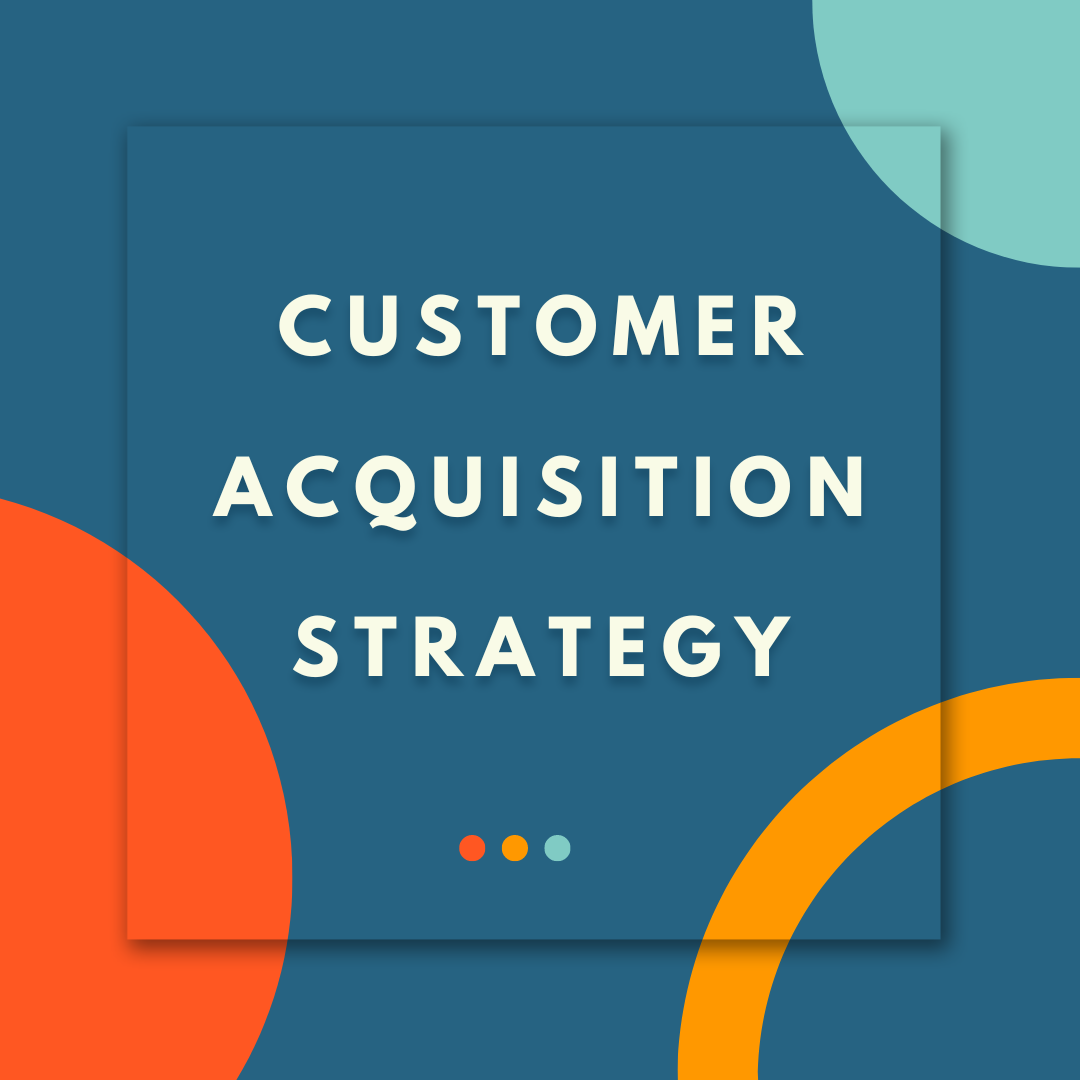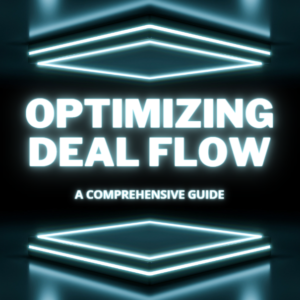Chapter 1: Customer Acquisition Strategy
Ok so let’s start with the most important thing in regards to build a sales team is that is a clear customer acquisition strategy. This strategy is going to be used to figure out what kind of sales team you’ll need to be built based on the required skills. If you do not have a clear customer acquisition strategy, please stoip everything else and focus on this one thing. Theory is important but proving it through experiments that provide predictable results is what we need since a sales team is simply unlocking more capacity to get the same results of tried and trued methods.
Don’t make the mistake and hire a sales team with a clear plan on acquiring customers, using the good ole, “They will figure out.” So before we break down some strategies that can be deployed, lets cover one more important variable in the equation which is average customer lifetime value. This is a key variable because it will be the limit on the economics of the acquisition strategy.
For example, if my clients have an average $1,000 lifetime value and cost the business $400 dollars in operating expenses to serve that client, then you have theoretically $600 in profit and customer acquisition expenses. A lot of really savvy entrepreneurs who have a high referral rate and low churn rate (Clients that leave), use the entire $600 to acquire customers because they know they will get there profit in the long tail with for example 10 client acquisitions creating 3 new clients from referrals if they have a 30% referral rate.
Now that we have that understand, let’s move into some customer acquisition strategies, here are four:

- Paid Traffic
This strategy is a marketing led and is really effective if you have the budget. This gives your sales team, immediate deal flow and feedback on your strategy. However not all paid traffic is the same. You get to be clear on where your ideal clients are and what your desired conversion looks like. So lets break this down
If your ideal clients are people in enterprise companies and you want there desire conversion to be an opt in with there email to learn more about your product. The best platform will probably be GOOGLE ADWORDS since managers and leaders in companies are searching for specific solutions and are more likely to opt in volunteerly on something they have an intention on buying
If your ideal client is a small business and you want there desire conversion to be an opt in with there email, then you will probably want to use Facebook Ads or Tik Tok Ads since you can target really specifically at scale across a geographical area.
If your ideal client is a consumer and you want the desire conversion to be opt in to get a promo code to purchase an item then Facebook and Tik Tok will be the best.
When doing paid traffic the creative being used to persuade prospects is 80% of the battle. If you are using Tik Tok, the first 3 seconds of the video will make the largest impact. If you are using GOOGLE Ad Words, the copywriting (Persuasive Speech) is critical. You have to be willing to test different things out, and not attached to what you want to see work but what the prospect wants to see to make an informed decision.
Paid Traffic opens up an interesting dynamic on what kind of sales team you need. Since this is an inbound strategy, response time to opt in is critical, so having a team member ready to connect with lead is critical. Since this is going to be volume and you have to qualify the prospects as you connecting with them, it’s not a good use of resources to have your best deal maker doing reach outs, you should want them on the phone with as many qualified leads as possible which means you need at least a 2 member team, one appointment setter and a closer.
- Cold Email/Calling
This is strategy is a sales led and is really effective if you have an irresistible offer. An offer so easy to yes too that you feel as if your a disadvantage saying no. So where does cold email and calling fit? Well its all about leveraging a 3 part system to initated communication. Personalization, social proof, and call to action. Cold Calling doesn’t need to be this pushy and aggressive practice. It is simply. taking the time to do a little homework on the prospect to see if they are qualfied and what is something about them that is worth sharing and/or to be proud of. At the end of the day you are calling people and people do business with people, so being a human first is critical in cold reaches.
So let’s chat about social proof, since it is a the core thing being used in the strategy. This is essentially something that should be short, concise, and jam packed with FOMO like quality. FOMO means fear of missing out for those that never heard the term. An example of a social proof line is, we’ve helped ABC, build a sales team with there existing marketing budget and tripled revenue in 90 days. It has that wow factor which will come right after they feel personalization and your going to follow the social proof up with,
Interested to chat? Time to chat next week? Should I send an invite over to chat?
Boom! This is also a strategy you get to practice. Something to be aware of with the strategy is that it will require more manpower because you will need a lead generator, email copywriter, appointment setter, and a closer. Also the time is longer to setup because you will need to setup cold email domains to protect your company domain, which also takes some time to setup properly.
- Content Strategy
This is a marketing led strategy that focus on long term brand building. This strategy is not a, create content and wait for people to see it. No it is an all hands on deck strategy which will require interacting with the audience in others content and your content.
The name of the game on social media is engagement, the more engagement your content has, the more the algorithm will boost it.
One of my favorite content strategies is podcasting since it creates a ton of distribution with all the streaming platforms along with the ability to redistribute micro clips on social media platforms. It also has the ability to be repurposed to blogs and written content which can then drive SEO traffic to website.
To really knock it out the park with podcasting, getting on guest podcast and getting exposure to other audiences is a huge growth hack especially if you give the audience something to optin too.
On top of this, you can bring on guest of other podcast host and/or your ideal clients. It’s more likely that the CEO of Company XYZ is willing to jump on a podcast to talk about himself then he is to jump on a call with sales person. So podcasting can give you access at scale.
Last thing Im going to mention in the section that is critical to understand with this content strategy and that is you get paid in the comment section not the DM’s. Sure you’ll book the call or make the sale in the DM’s however you are doing the engagement and conversation in public because you are more likely to get a response in the comment section from the prospect then in the DM’s. Also you are getting exposure to there audience in the comment section which will boost your association with that client persona. If people see you hanging on yachts with rich people, they are going to assume your rich and supposed to be there. So slide in the comment section and assume your suppose to be there for the world to see.
So where does a sales team fit? Well they can be driving engagement in comment sections, setting interviews, collaborating with other content, making introductions between people in the network, they can be posting content in facebook groups, slack channels, linkedin, and more. Sales people can use content to engage with prospects. Which means you can start with one sales person with a clear understanding on how social media works and has some ability to write and create content as well communicate in the DM’s and comment section.
- 3rd Party Events/Partnerships
So this strategy is pretty popular in the corporate space, where conferences, trade shows, sponsorships, and strategic partnerships are used to get access to a large number of specific prospects that have been acquired from a brand. This strategy can be tricky because it can be associated with building brand awareness so we’ll just focus on the strategies that can be specifically used with a sales team to drive deals.
In person events like conferences can be great belly to belly engagements. They can be used really effectively if you have a booth. Offering event only deals that expire at the end of the event can drive alot of sales. If deals are to large to sign in such a short period of time, booking calls on the spot can be the best option. The most common things people do is collect emails and/or business cards which I think is good to do if your speaking with a large number of people, however your sales people should be on the floor asking the same questions they do on discovery calls and lead the prospects to a call after the conference is over.
Another great example is using partners to generate leads for your sales team, so paying to access someones community or getting a shout out on there email list. All the traffic goes to specific landing page with an opt in or a call booking link.
So to wrap things up in this chapter, it is critical to establish one channel at a time and do it long enough to analyze results which is at least 6 months. Not 6 months of doing the same things everyday and not experimenting. Every week, if not everyday you have to test variations of the strategy you decide to try first. During the experimentation phase your going to find the best way and you’ll know why because you have data and experience to back it up.
The goal is then create Standard Operating Procedures using the examples in the experimentation period as a guide.
If you have come this far, why not get excited for more?



